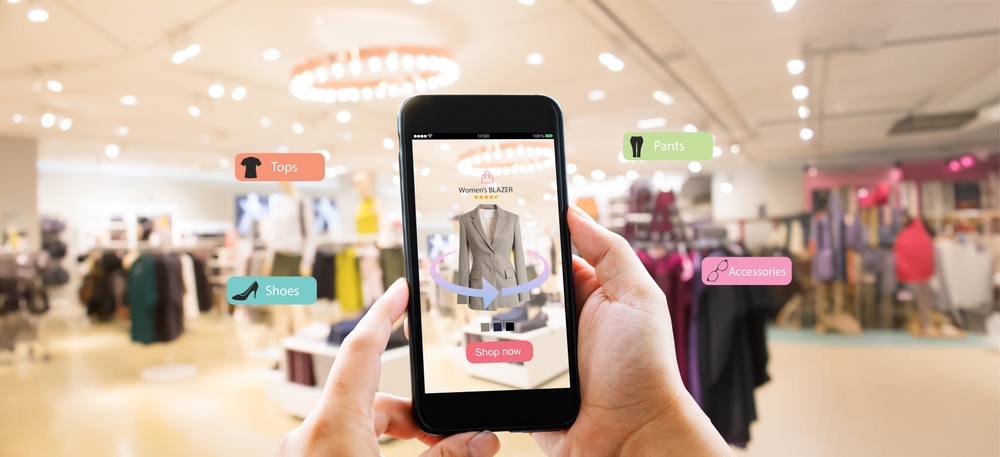Augmented reality (AR) marketing creates immersive, interactive experiences by overlaying digital content on real-world environments via smartphones, tablets, or AR glasses. It enhances customer engagement, boosts brand awareness, and drives sales.
What is Augmented Reality Marketing?
Augmented reality marketing involves using AR technology to create interactive digital experiences that enhance real-world environments. Unlike virtual reality (VR), which creates entirely digital worlds, AR overlays digital elements onto the physical world, allowing users to interact with both simultaneously. This can include anything from 3D product models and interactive ads to virtual try-ons and AR-based games.1 By integrating AR into marketing strategies, brands can create memorable and engaging experiences that resonate with their audience.
Benefits of Augmented Reality Marketing
- Enhanced Customer Engagement: AR marketing captures attention by offering interactive and immersive experiences that stand out from traditional advertising. This increased engagement can lead to higher conversion rates, as customers are more likely to interact with AR content than static ads.
- Personalized Customer Experiences: AR allows brands to personalize their marketing efforts by offering tailored experiences based on user preferences and behaviors. For example, virtual try-ons for clothing, makeup, or furniture can be customized to individual users, making the shopping experience more relevant and enjoyable.
- Increased Brand Awareness and Recall: AR marketing can boost brand awareness by creating memorable and shareable experiences. Users are more likely to remember brands that offer unique AR interactions, which can enhance brand recall and encourage word-of-mouth marketing.
- Improved Customer Decision-Making: AR helps customers make more informed purchasing decisions by allowing them to visualize products in real-world contexts. Whether it’s seeing how a piece of furniture fits in their home or how a new pair of glasses looks on their face, AR provides a practical way to explore products before buying.
- Data Insights and Analytics: AR marketing provides valuable data on how users interact with content, including engagement rates, time spent on experiences, and user preferences. This data can help brands refine their marketing strategies, optimize content, and better understand their audience.
Applications of Augmented Reality in Marketing
- Virtual Try-Ons and Product Previews: Retailers and beauty brands use AR to offer virtual try-ons, allowing customers to see how products look on them without physically trying them on. This is popular in the fashion, eyewear, and beauty industries, where customers can experiment with different styles and colors before making a purchase.
- Interactive Advertising: AR ads can turn traditional print or digital ads into interactive experiences. For instance, scanning a QR code on a magazine ad might launch a 3D model of a product or an interactive game.2 This not only captures attention but also encourages users to engage more deeply with the brand.
- AR-Enhanced Packaging: Brands can add AR elements to their product packaging, providing additional content such as tutorials, recipes, or games. By scanning the packaging with a smartphone, customers can access these experiences, adding value to the product and enhancing the unboxing experience.
- Location-Based AR Experiences: Brands can use AR to create location-based experiences, such as AR scavenger hunts or interactive city tours. These experiences encourage users to explore physical spaces while engaging with branded content, merging the digital and physical worlds.
- AR in Social Media Marketing: Social media platforms like Instagram, Snapchat, and Facebook offer AR filters and lenses that brands can use to create interactive content. These filters allow users to engage with branded experiences directly within the app, driving both engagement and reach.
Strategies for Successful Augmented Reality Marketing
- Focus on User Experience: For AR marketing to be effective, it must offer value to the user. This could be through entertainment, information, or utility. Brands should ensure that AR experiences are easy to use, intuitive, and enhance the overall customer journey.
- Leverage Storytelling: AR is a powerful tool for storytelling, allowing brands to create immersive narratives that draw users in. Whether it’s an interactive product demo or a branded AR game, storytelling can make the experience more engaging and memorable.
- Integrate with Other Channels: AR marketing should be part of a broader multi-channel strategy. Brands can integrate AR experiences with social media, email campaigns, in-store promotions, or events to maximize reach and impact.
- Test and Optimize: As with any marketing strategy, testing and optimization are crucial. Brands should analyze how users interact with AR content and make adjustments based on feedback and data insights. Continuous improvement will help refine the experience and increase its effectiveness.
- Stay Ahead of Trends: AR technology is constantly evolving, and staying ahead of trends can give brands a competitive edge. Keeping up with the latest AR innovations and exploring new ways to use the technology can help brands maintain relevance and continue to engage their audience.
Revolutionizing Customer Engagement with Augmented Reality
Augmented reality marketing offers brands an innovative way to connect with consumers, providing immersive experiences that go beyond traditional advertising. By leveraging AR, companies can enhance customer engagement, improve decision-making, and create memorable brand interactions. As AR technology continues to evolve, it will become an increasingly important tool in the marketer’s toolkit, offering endless possibilities for creativity and customer engagement. For brands looking to stand out in a crowded marketplace, augmented reality marketing provides a powerful means to captivate and convert their audience.
